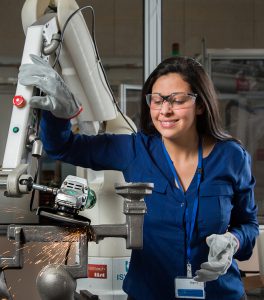
Agile, flexible production systems are a decisive factor in how competitive an industrial company is. Robots can automate the most repetitive tasks, but collaborative robots, or cobots, represent a true breakthrough. Today’s increasingly-intuitive cobots interact closely with human operators, relieving them of the burden of difficult and repetitive tasks so they can focus on tasks where human expertise is key. However, working in proximity to machines raises the issue of how to keep human operators safe.
For the past several years, researchers at CEA-List have been integrating AI into robots and cobots to improve their ability to interact with humans and boost their overall performance. More recently, they began addressing safety, using AI to bolster the existing low-level safety loops. Their approach hinges on adapting the cobot’s behavior to the operator’s competence and trust in the cobot.
The researchers developed algorithms to detect impacts between the cobot and human operator to analyze the cobot’s behavior. Then, using a supervised learning approach, they analyzed speed, acceleration, and effort data from the cobot’s sensors in real time to separate intentional contact between human operator and cobot from accidental contact. They then developed context analysis algorithms to automate optimization of the work environment depending on each operator’s profile.
The solution was tested successfully in laboratory conditions. Several articles on the research were published in international journals and a patent was filed (jointly with ABB Robotics) to protect this innovation.
Read article at http://www.cea-tech.fr/